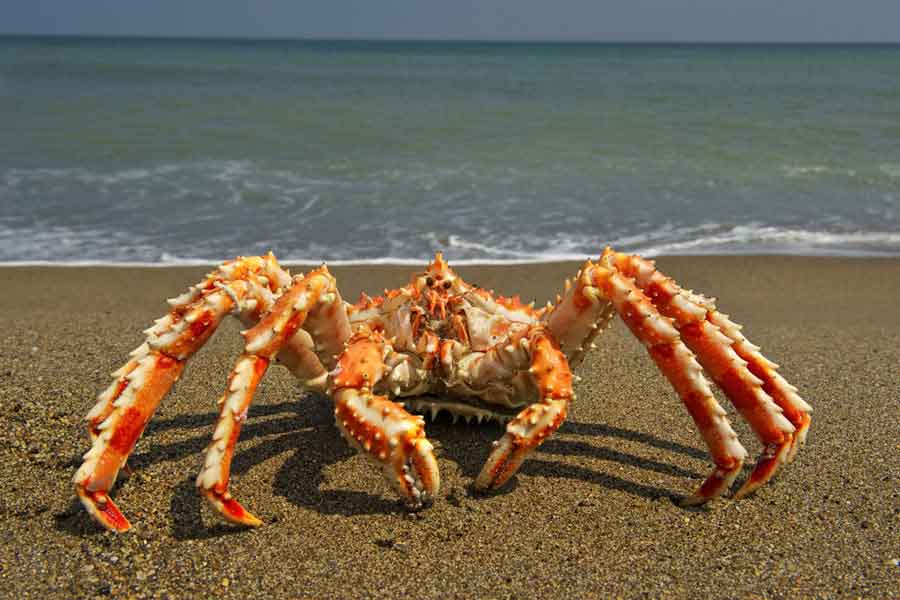
The spawning season of a particular species is a time of great risk. A large number of individuals gather in a specific area for reproduction. This causes predators of that species to flock to the area in search of abundant food.
The king crab, a large crustacean with elongated legs found in the seas of Alaska and southern Patagonia, has found a unique solution to this problem. When young crabs concentrate in a particular area on the seafloor, they stack on top of each other and tightly entangle themselves. They form rounded and elongated clusters.
These aggregations consist of individuals of both sexes and nearly the same age. This peculiar social behavior is observed in young animals during their first three years of life. By staying together during reproduction, they can better counteract predator attacks. Their rigid and closely connected carapaces form a solid shield.
In this way, they present themselves to the enemy as a single, enormous animal that would be futile to attack. However, if fish that feed on them were to attempt an «assault,» they would face furious head blows against the population, and after several attempts, they would notice that they can only occasionally detach an individual from the formation. This represents meager food for a significant expenditure of energy.
On one occasion, a cluster of a hundred crabs was followed and observed. It was found that they had barely covered 300 meters of seafloor in just over two months. During their slow movement, they encountered another, much larger formation consisting of several thousand individuals and merged with it. After these gatherings and once spawning is finished, king crabs regain their freedom and return to their solitary lives to feed. They then become easy prey for predators, who will have to settle for isolated individuals.
Over thousands of years of evolution, the sea has found ingenious answers to the questions of survival. Animals have developed successful defenses to face their enemies. However, they have not yet developed «antibodies» against human attacks. In the case of the king crab, humans take advantage of these massive gatherings to catch them with minimal effort. The sea will have to respond to this; the only question is whether we will give it enough time.
«One cannot defend what one does not love, and one cannot love what one does not know.»

